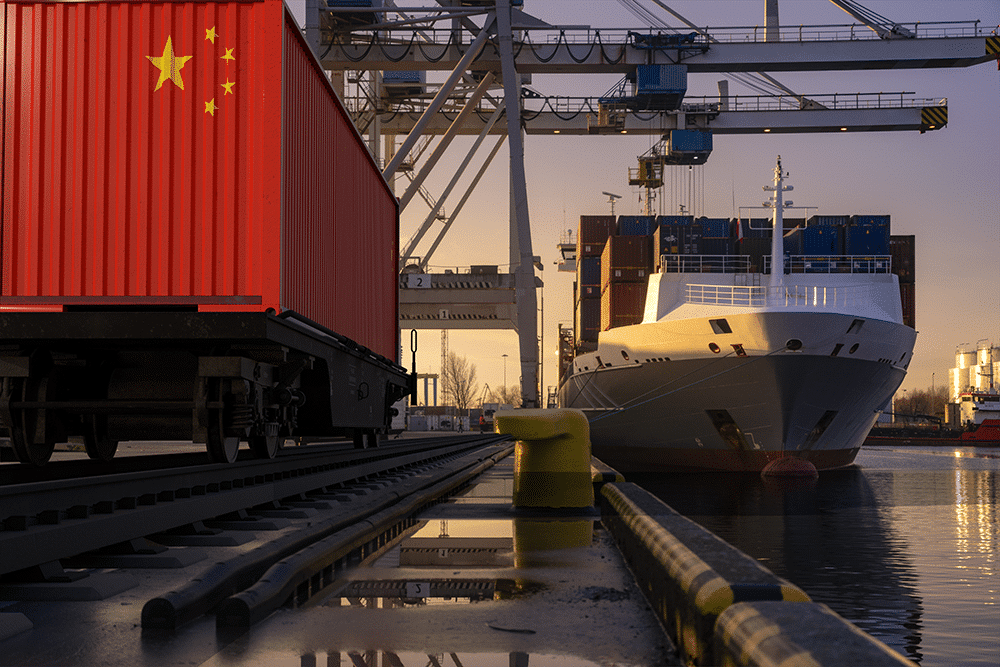CBAM Update: How the USA and EU are Collaborating to Curb Chinese Steel Imports

This month saw the launch of the EU’s CBAM policy, a much-needed abbreviation for Carbon Border Adjustment Mechanism. Officials designed the trade policy to put a fair price on the carbon emitted during the production of carbon-intensive goods entering the European Union. They also hope it will encourage cleaner industrial production in non-EU countries.
The policy will apply to a range of carbon-intensive products, including cement, iron and steel, aluminum, fertilizers, electricity, and hydrogen. The intention is to protect domestic producers who must meet EU environmental emission regulations from suffering unfair competition from overseas producers not subject to the same regime. CBAM is further meant to dissuade EU producers from investing overseas in lower regulated locations in order to avoid those same costs, often referred to as “carbon leakage.”
The CBAM has only just gone live as of October 1, entering into application in its transitional phase. Currently, the first reporting period for importers ends on January 31, 2024. Meanwhile, the American Action Forum reports that the plan is to start taxing U.S. exports in carbon-intensive sectors in 2026.
Receive weekly commodity market intelligence on steel imports, helping your company adapt and thrive in the face of changing demand dynamics. Opt into MetalMiner’s free weekly newsletter.
Affects on Changing U.S. Trade Policies
Should the U.S, be bothered by what the EU does in this regard? Well, yes. On several levels, it has relevance for both U.S. and domestic consumers. Though plans may change, subject to the presiding administration, the U.S. is considering implementing its own CBAM. And for once, there is bipartisan support for the measure. That said, what form a U.S. CBAM would take is yet to be fleshed out. Still, in the same manner as the EU’s policy, any CBAM would allow the U.S. to impose a price in the form of import fees, tariffs, or taxes, on carbon emitted during the production of goods in the country of origin.

Both trade blocks have long sought to limit market penetration of low-cost steel, aluminum, and other products from their home markets. For instance, President Trump introduced the section 232 tariffs of 10% on aluminum and 25% on steel products from nearly everyone. He then gradually relented in return for imposing quotas from a number of sources. The Biden administration extended that process further, allowing bilateral trade with larger groups – such as the EU – to avoid the 232 tariffs, while still having trade volumes limited by quotas.
Stay ported on steel market trends, renewable market trends, and get insight on 8 other metal industries on a monthly basis with MetalMiner’s free Monthly Metals Index report. Sign up here.
Concerns About China, Environment Lead Charge for CBAM
The main target for both EU and U.S. restrictions on steel and aluminum imports has always been China, and, to a lesser extent, other Asian and East European players. However, the justification for recent U.S. moves to impose additional tariffs on imports has evolved over time. Under Trump, the impetus was national security. Under Biden’s green steel initiative, the stated goal was protecting the environment. Under the current iteration, the U.S. claims it simply wants to eliminate excess global capacity. Still, the target has principally been China in every case.

All such initiatives probably fall foul of WTO rules and would end up in litigation, but a CBAM has the shiny, burnished image of being environmentally responsible. And who in this day and age can argue with an environmental justification? Indeed, the EU’s lawyers have spent years formulating their CBAM expressly to avoid WTO litigation, so a U.S. CBAM would most likely look very similar.
It’s important to note that a CBAM is not a “low impact” policy. Indeed, the World Economic Forum estimates that “one-fifth of the world’s carbon emissions come from the manufacturing and production sectors.” Indeed, policymakers in the EU and U.S. see cutting carbon emissions in manufacturing sectors as an essential and relatively simple aspect of their carbon emission reduction objectives. This is despite those countries most likely missing their earlier targets. Nevertheless, pressure continues to mount across mature economies to fast-track CBAM agreements.
View MetalMiner’s track record of forecasting where steel prices are headed.


Leave a Reply